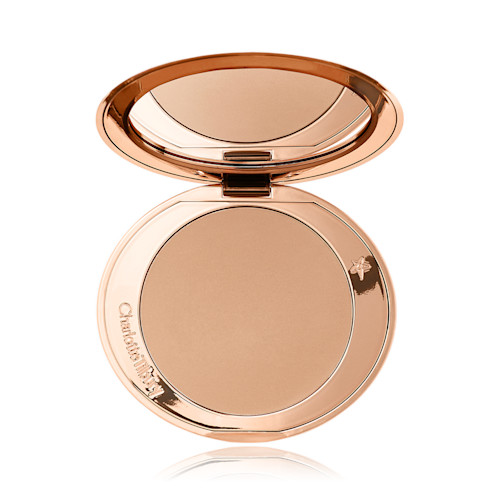Cream Blush : Cloud Paint | Glossier
A seamless, buildable gel-cream blush that’s enjoyable to apply and easy to wear.
The most user-friendly blush under the sun.
What it is: A seamless, buildable gel-cream blush that’s enjoyable to apply and easy to wear.
WHY IT’S SPECIAL:
- Just sheer enough upon initial application to make it easy to work with and layer without going overboard—simply dab it on cheeks and tap into skin for a natural, flushed-from-within glow.
- Special Blurring Pigments give a soft-focus effect that doesn’t accentuate texture or pores—as if you just happen to be in golden hour lighting all the time.
- The lightweight gel-cream formula has a pillowy, bouncy feel that blends seamlessly and leaves cheeks dewy, not streaky or chalky.
Additional information
| Ingredients | Collagen Retains a high amount of water (it’s a really effective hydrator!) and leave cheeks feeling fresh and dewy Smooth-Gel System One-of-a-kind, lightweight gel-cream texture makes for silky, even application. Blurring Powder Pigments Provide a soft, diffused, seamless finish—no more streakiness. |
|---|











by Eliza
I am a medium skin tone and I have been using the blush dawn for about a month and a half and it is so simple and pretty! I would totally recommend it for medium tan skin tones. It blends very easily and is super creamy. Only downfall is that when I apply it with my fingers it stains them because of how pigmented it is but other than that I love this blush and will hopefully purchase more colors!
by Skyler
Some of my all time fav blushes! They are highly pigmented and stay on well. So far I have storm and beam. Storm is amazing for fall or winter and beam is great for spring or summer. Definitely some of my favorite products from glossier. Highly recommend, you won’t be disappointed!
by Caitlin
Back in 2020 the super glow serum was the first glossier product I bought. With that I received two cloud paint samples, puff and storm. I absolutely loved them both but decided to go for puff as I had a powder blush in a very similar colour that I really liked. Fast forward two years and I used my cloud paint in puff almost every day and bought a backup tube recently as I could not live without it. I had been thinking about getting storm for quite some time as I loved the way it looked when I tried it. I went to the Covent Garden store on Friday and picked it up and I’m very happy I did!! 🙂
by Nadine
By far and away the very best blush I’ve ever used.. The only problem problem is the product can shoot out of that tube resulting in waste.
by Ella
I have pale skin with cool red undertones, and i love this blush!! It perfectly accentuates my cheekbones with a brownish tint, which is great because getting any pink or red with yellow tones worried me:)
by Gabrielle
cloud paint is awesome. it adds a little kiss of color and gives my cheeks the warmest flush without looking clowny or unnatural. i also love how long it lasts, not just on my skin but in the tube! this is a good buy.
by Livia
It’s really hard to control how much comes out of the tube, and since such a tiny amount goes a long way, I end up wasting a lot. But it looks really cute and natural on. I think you have more control with a powder blush but this looks more natural and dewy which is nice sometimes.